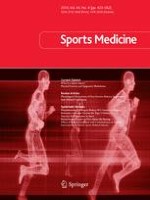01-07-2011 | Review Article
Sex Differences in Proximal Control of the Knee Joint
Published in: Sports Medicine | Issue 7/2011
Login to get accessAbstract
Following the onset of maturation, female athletes have a significantly higher risk for anterior cruciate ligament (ACL) injury compared with male athletes. While multiple sex differences in lower-extremity neuromuscular control and biomechanics have been identified as potential risk factors for ACL injury in females, the majority of these studies have focused specifically on the knee joint. However, increasing evidence in the literature indicates that lumbo-pelvic (core) control may have a large effect on knee-joint control and injury risk. This review examines the published evidence on the contributions of the trunk and hip to knee-joint control. Specifically, the sex differences in potential proximal controllers of the knee as risk factors for ACL injury are identified and discussed. Sex differences in trunk and hip biomechanics have been identified in all planes of motion (sagittal, coronal and transverse). Essentially, female athletes show greater lateral trunk displacement, altered trunk and hip flexion angles, greater ranges of trunk motion, and increased hip adduction and internal rotation during sport manoeuvres, compared with their male counterparts. These differences may increase the risk of ACL injury among female athletes. Prevention programmes targeted towards trunk and hip neuromuscular control may decrease the risk for ACL injuries.





